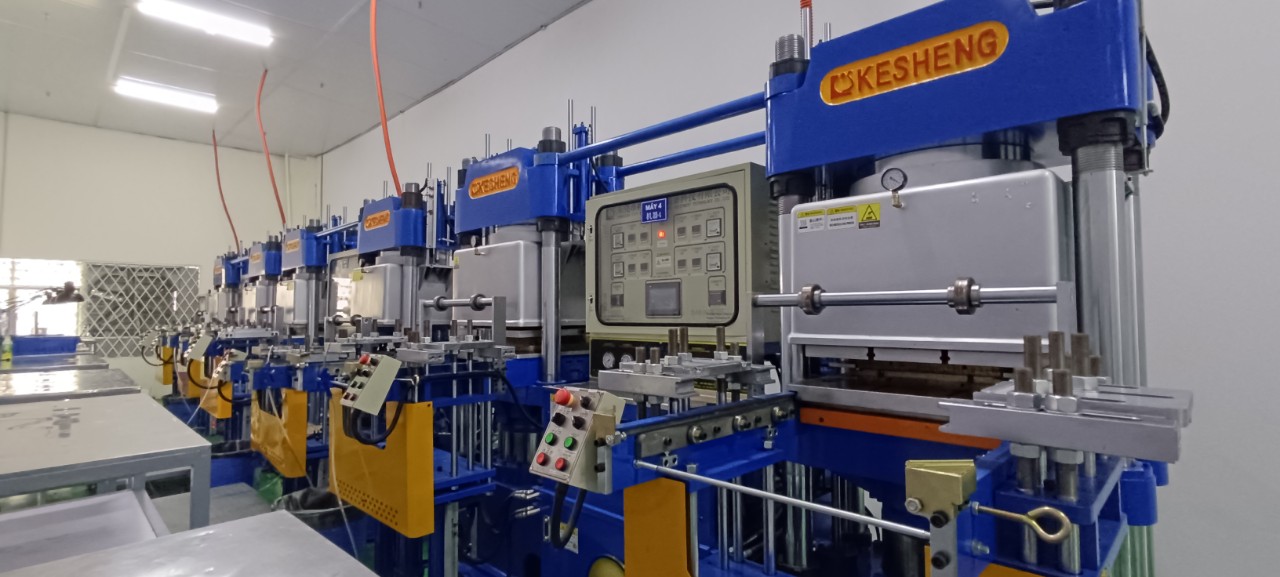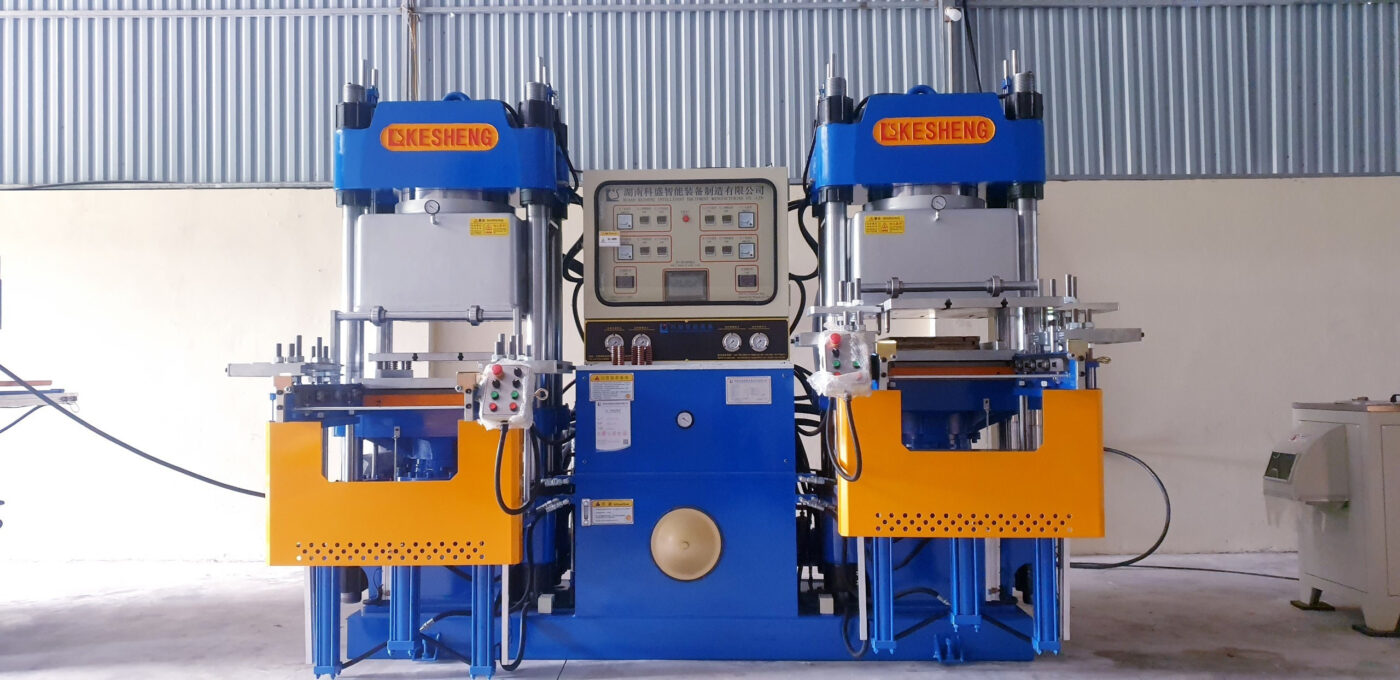As we know, hot pressing to create high-quality rubber products is crucial and largely depends on the rubber compression molding technique. So, what exactly is rubber compression molding?
Head Tech will describe this technique and its applications in the article below:
Compression molding is one of the oldest techniques for producing molded rubber products, shaping raw rubber materials into desired forms to meet industrial, commercial, and consumer demands.
Essentially, rubber compression involves taking an elastomer mixture or raw rubber material and forming it into a product by shaping it inside a mold under heat and pressure. This activates a chemical reaction, causing the rubber particles to fill the mold and form the desired shape (according to the rubber mold’s profile).
While the actual process of rubber compression molding is fairly simple, engineers must go through several steps and complex calculations before the compression molding process can begin.

The Rubber Compression Molding Process and Technique Involves the Following Steps:
1.Preparing and Setting Up Equipment for Rubber Compression Molding:
Upper and Lower Mold: These are the two main components of the mold, responsible for shaping the rubber during the hot pressing process and producing the required products for customers.
Mold Pin: This part helps position and guide the upper mold so that when it presses down, it aligns correctly with the lower mold.
2.Setting the Parameters for the Rubber Compression Molding Equipment:
The settings are based on the type of elastomer material being used to ensure machining accuracy.
If the parameters are incorrect, the alignment between the upper and lower molds may be off, resulting in deformed rubber products that look unsightly and may be unusable.
Ensuring this accuracy requires significant skill from the technical staff and skilled operators.
3.Calculating the Expansion and Shrinkage of Rubber Materials:
This ensures that the mold cavity is filled properly, resulting in products with good elasticity and smooth, even surfaces.
4.Loading and Vulcanizing the Elastomer in the Press:
A pre-measured amount of raw rubber is placed directly into the open mold cavity. The mold is then inserted back into the press and closed.
Heat and pressure are applied to the mold, initiating the vulcanization process, which shapes and hardens the rubber.
Afterward, the mold is opened, and the finished rubber product is removed.
5.Regular Monitoring During Production:
Operators must regularly check the product and machine settings to detect issues such as molding tolerance errors and make the necessary adjustments.
6.Ensuring Product Quality:
To produce high-quality products, it is crucial to control both the quality of the material and the technical skills of the staff during the compression molding process.
At Head Tech, we understand that the quality of rubber press components can significantly impact the overall efficiency and safety of machinery, products, or tools. Meeting customer price expectations and goals is an integral part of our manufacturing process, and Head Tech is always ready to assist.
Contact us online or call us at 0708.141.698.



